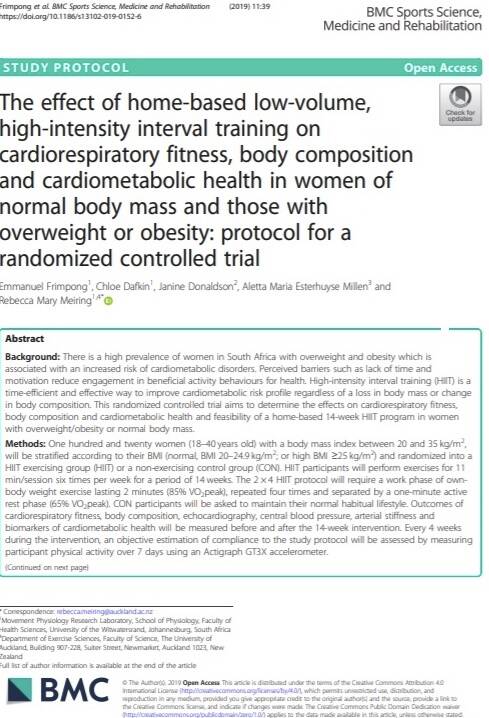Science-Based Training
- HOME
- ABOUT SCIENCE BASED TRAINING
Do Less, Achieve More. With Science
Coach Paul has had an engineering background prior to becoming a professional trainer. Hence everything he does is backed by scientific research or by common sense if former isn’t available yet. Unfortunately, many people are influenced by hypes or trends without giving second thoughts, causing themselves undue injuries and wasted time.
We want to steer everyone clear of this path.
We take the guesswork out of your fitness routine
Our targeted clients are often busy professionals working in various industries who always find it challenging to find time to exercise and eat healthily. They include business owners, doctors, lawyers, lecturers, teachers, C-level executives, professors, etc.
They need to be in greater shape than an average person to cope with the demands of the world thrown mercilessly at them. If they are in poor shape, it may mean poor performance at work, experience burnt-out and even face early death. You may have known someone personally like that. Ironically, these are the same people who have the least time and energy for health maintenance. Thus, we have designed holistic programs specifically to help these executives to ‘do less achieve more’.
Health is not wealth
People often equate health with wealth. But this is flawed. Health is far more important than wealth! What is wealth when health is no longer present? Helping these people to understand and to place health at the topmost priority is an absolute MUST if they want to stay at the top of the game. The recent Covid 19 pandemic can teach us something about this.
Exercising mindlessly in itself, will not help one achieve the optimal result. Equal attention to other areas, which are all potentially weak links, is the secret to success. Disillusioned by with the standard training process practiced generally, we decided to take our approach to the next level.
Good science vs bad science
Not all exercise science are good. Some are outdated. Some are even dangerous.
Classic example: “Squats are bad for people with knee issues. Deep squats are worse”, says some medical experts. In reality, there are many forms of knee related issues such as: torn or strained ligaments, cartilage tears, tendonitis and arthritis. Understanding the cause is the first step to addressing the problem. To suggest that the full squats will damage the knees without studying the context of underlying issues, exercise forms and knowledge of the coach, is like suggesting that running a business can cause bankruptcy and hence should be avoided.
In most cases, full squats not only do not aggravate the knee issue but in fact is one of the best ways to improve it (1):
- Squatting is a functional move and found to be beneficial for strengthening the knee, which supports prevention of and recovery from common knee injuries.
- It helps you do activities in your daily life, such as getting items from a bottom cabinet or picking up box off the floor.
- Squatting also helps build strength in the legs and hips, and stronger muscles mean more stable joints.
At Fitness Tutor, we have dealt with countless clients with all types of knee issues and avoided surgeries altogether. Almost all have fully functional knees and many can even perform one-legged squats! One example is Prof Jacob Lee, a renowned corporate coach, who came to us with a set of bad knees and can now squat with one leg with added resistance.
Bad science also applies to nutrition. It is common to hear that ‘Cholesterol is bad so you should avoid eating food that contains cholesterol’. The truth is, cholesterol is a nutrient and food cholesterol doesn’t impact your blood cholesterol much. Most of the blood cholesterol is produced by the body. It is important cholesterol helps your body make cell membranes, many hormones, and vitamin D. It is essential to keep you alive.
To date, extensive research did not show evidence to support a role of dietary cholesterol in the development of Cardiovascular disease. As a result, the 2015–2020 Dietary Guidelines for Americans removed the recommendations of restricting dietary cholesterol to 300 mg/day (2)
Our training model follows latest established research papers based on reputable Journals (example below) and that have been tested rigorously in labs/trials or peer-reviewed and further experimented at our end (yes, we collect own data). We never based our coaching on fitness magazines, news, or worse, trends.
Principles of Exercise Science
By integrating several crucial science-based principles into our coaching we help clients regain health, fitness and youth in the shortest time possible.
Individualized programs
Balanced fitness
Progression
Exercise physiology
Synergy Power
Personalized nutrition
Individualized Programs
A quick Google search will yield many pages of workouts or programs you can copy from, but more often, they do more harm than good. Even programs conducted by fitness professionals can cause exercise related injuries lsuch as Rhabdomyolysis and Cardiac Arrests when exercisers are pushed beyond their limits. (3,4,5)
‘Inspirational’ quotes like these are commonly seen in gyms.
“Go HARD or Go HOME!”
“Unless you puke, faint or die, keep going”
Seriously? Such machoistic phrases are stupid, unwarranted and counterproductive, especially for beginners. The result is one may end up being admitted to hospital (or even death) for working out beyond their limits.
We exercise in order achieve multiple benefits to our health, enjoy the process and reach our goals, and so it has to be customized accordingly, not blindly following any program and hurt ourselves. Not everybody wants to be an Olympian, we want to be healthy.
With many decades of continued research and experiments, grounded on the science of physiology, biochemistry, psychology and systems, we finally developed 100% individualized training systems that encompass these keys:
Assessment and diagnostic tools that address certain weak links in fitness, emotional and mental health.
Medical report analysis
Setting attainable goals
Time saving exercise sessions consisting of
Natural-Kinetic-Exercises – The most productive ‘synergistic’ exercises that your body is born to do. These exercises are based on 80/20 rule, meaning 80% of the result comes from 20% of the exercises.
Exercise priority sequence – To ensure the body is exposed to appropriate safe intensities throughout exercise sessions by doing the more challenging exercises first. Think of ‘pebble in the jar‘ theory.
HIIT. We pioneered the whole HIIT training concept even before the global high-intensity big proponents like Crossfit and Tabata were around. It was, in fact, Coach Paul’s Thesis for his Master’s Degree in 2001.
Full body workouts, which worked multiple:
muscles (legs, back, arms, core etc)
human body systems (cardio, muscular/skeletal, endocrine etc)
fitness components (bodycomposition, flexibility, strength, endurance etc)
- Behavioral modifications – to break bad habits and enforce positive ones through time-tested strategies.
Fully-customized/personalized fitness program designed based on the profiles of the clients. This occurs after the assessments and continues in an on-going manner. Every day is different for the clients (due to demands of work, diet, sleep, etc) so further micro-customization takes place to account for the daily fluctuations. In a nutshell:
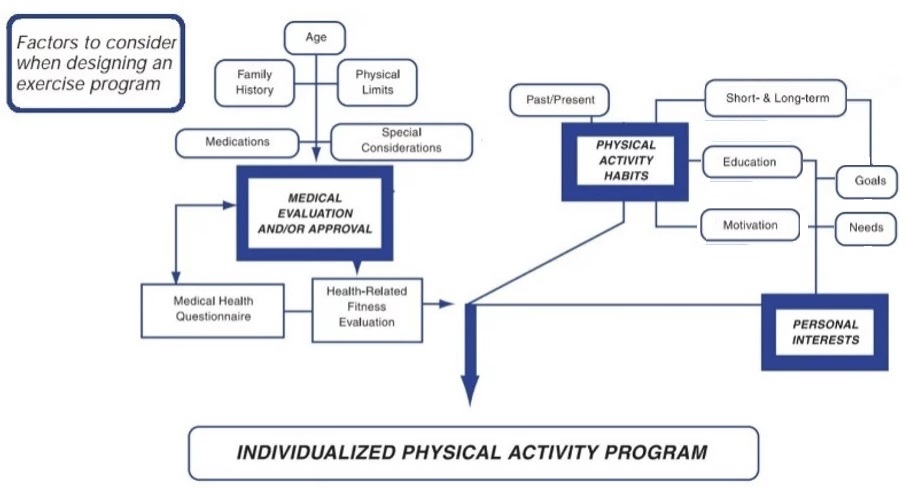
Balanced Fitness
Many people exercise just to develop just 1 or 2 aspects of fitness. Eg
weight training for strength & muscle
sports for speed, agility & coordination
yoga for flexibility & balance
running for cardio
In reality there are 10 components of fitness (6,7) which you need to do if you want to consider yourself as truly all rounded fit and be youthful. Doing so protects yourself from diseases or injuries, associated with the weak links caused by underdevelopment in a single component. The 10 components are:
Body Composition — ratio of muscle and fat in the body.
Muscular Strength — the ability to carry out work against a resistance.
Muscular Endurance — the ability to repeat a series of muscle contractions without fatiguing.
Power — the ability to exert a maximal force in as short a time as possible
Speed / Quickness — the ability to move quickly
Agility — the ability to quickly change body position or direction
Flexibility — the capacity of a joint to move through its full range of motion
Balance and Coordination — the ability to stay upright or stay in control of body movement
Cardiovascular Endurance — or aerobic fitness / stamina
Reaction time — time taken to respond to a stimulus
Imagine, you are strong as a ox but can’t complete a lap round the stadium. Or you are as flexible as a rubber hose but weak like a kitten. All these point to a lack in all-round fitness.
At Fitness Tutor, no component is left out of your training but will place greater emphasis on weaker components or areas that you are more keen to develop. And you achieve all in the same workout using the powerful effect of synergy mentioned below.
Progressive Overload
You don’t jump from elementary to tertiary school overnight, nor should your exercise program. Our bodies adapt to the current exercise routine over time, so stepping up the training at slow but steady intervals will ensure constant progress is maintained (8)
This is important if your goal is to increase your strength, speed, or endurance. Ditto if you want to lose weight or improve health. There are many ways use progression – adding more weight, doing more repetitions, doing more frequent workouts, increasing speed of training etc. Whatever it is, there is an exact science in using this principle and you can’t simply progress whenever and however you like.
There are many factors to determine before trying to step up. Consistency of training, proper nutrition, sufficient rest, personal interests etc should all be taken in consideration. These are often neglected by most exercisers, due to lack of knowledge, jumping into routines without building the proper base over time. This results in injuries, or staying at the same level without improvement.
Exercise Physiology
Exercise physiology examines how your body’s cells and organs, such as your cardiovascular, muscular and respiratory systems, are changed when exposed to both acute (short) and chronic (long) bouts of exercise, and dietary intervention. From this science, we can establish what type of exercises are best suited to achieve specific goals. You can’t simply exercise without really knowing what you are doing is truly good or bad for you. At Fitness Tutor, we have spent a large amount of time dissecting established academic research papers and conducting our own real life testing to derive the best possible protocols for our clients. The exercises you do are tailor made for you.
Synergy Power
Synergy is an interaction or cooperation giving rise to a whole that is greater than the simple sum of its parts.
That is, 1 + 1 = 3 (or greater)
This concept is widely practiced in the pharmaceutical world. Treatments consisting of mixtures of drugs have been shown that their combined effect is greater than the sum of the effects seen when each drug is given alone.
Technically, to achieve balanced fitness mentioned above, one needs to exercise at least 6 or 7 days for 2 hrs each to get all the benefits, which isn’t practical.
There are many common exercises with poor synergistic value but many people are using them. Some examples are:
- Preacher Curls: Works only bicep muscles with unwanted elbows stress (tendonitis)..
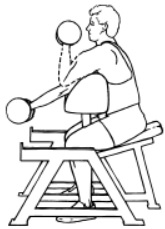
- Spinning Cycling Class: Burns calories, works/overworks the cardio system (causing the heart scarring), may cause muscle wasting (protein breakdown called Rhabdomyolysis) (1).
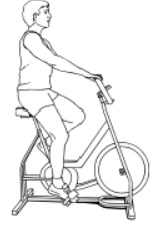
- Tree Pose in Yoga: Works the balance component only
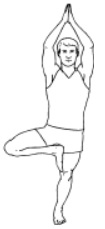
- One-legged dumbbell curls: works the biceps, core, leg stabilizing muscles, burns calories, improves bodycomposition, works the cardio, co-ordination and overall balance. You would have saved at least 50% of time. No additional equipment needed.
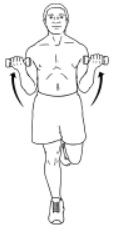
Simple concept, powerful result. Coach Paul calls this incredible net output ‘cocktail effect’.
Personalized Nutrition
Exercise and nutrition go hand in hand.
Focusing on one thing will not yield the best outcome, no matter what the goal is. For weight loss, it is be easier to restrict calories you consume, leading to quick weight loss. While regular exercise helps build/preserve lean muscle and burn additional calories (even at rest due to increased in metabolic rate), letting you lose even more weight and easier weight maintenance. Both are essential for fast and sustainable weight loss, due to synergistic effect mentioned above.
Similar to exercise program, nutrition needs to be personalized to give the best outcome. What works for A may not work for B, for many reasons. Factors like the following influence dietary food intake:
- genetics,
- goals,
- age,
- gender,
- lifestyle,
- environmental exposure,
- gut microbiome,
- epigenetics,
- etc.
For example someone who is diabetic would benefit from a reduced carbohydrates intake. In contrast, an athlete who works out 5 or 6 days would thrive on a higher carbohydrate diet. A 70 year old men would require a diet different from 30 year old lactating mothers.
To push for a particular diet isn’t going to work for everyone.
References
- Li G, Defrate LE, Rubash HE, Gill TJ. In vivo kinematics of the ACL during weight-bearing knee flexion. J Orthop Res. 2005 Mar;23(2):340-4. doi: 10.1016/j.orthres.2004.08.006
- Carson JAS, Lichtenstein AH, Anderson CAM, Appel LJ, Kris-Etherton PM, Meyer KA, Petersen K, Polonsky T, Van Horn L; on behalf of the American Heart Association Nutrition Committee of the Council on Lifestyle and Cardiometabolic Health; Council on Arteriosclerosis, Thrombosis and Vascular Biology; Council on Cardiovascular and Stroke Nursing; Council on Clinical Cardiology; Council on Peripheral Vascular Disease; and Stroke Council. Dietary cholesterol and cardiovascular risk: a science advisory from the American Heart Association. Circulation. 2020;141:e39–e53. doi: 10.1161/CIR.0000000000000743.
- https://www.sgh.com.sg/news/tomorrows-medicine/rise-in-cases-of-muscle-breakdown-from-spin-cycling-study
- https://tnp.straitstimes.com/sports/others/i-took-spinning-class-and-ended-hospitals-ae-clinic
- https://www.acc.org/latest-in-cardiology/articles/2015/09/29/11/34/sudden-cardiac-arrest-during-sports-activity-in-middle-age
- ACSM. ACSM’s health-related physical fitness assessment manual: Lippincott Williams & Wilkins; 2013.
- DeMet, Thomas & Wahl-Alexander, Zachary. (2019). Integrating Skill-Related Components of Fitness into Physical Education. Strategies. 32. 10-17. 10.1080/08924562.2019.1637315.
- ACSM. American College of Sports Medicine position stand. Progression models in resistance training for healthy adults. Med Sci Sports Exerc. 2009;41:687–708.P
Contact Us Now
- Tel: +65 97513400 (WhatsApp/SMS/Call)
- training@fitness-tutor.com
- 1 Commonwealth Ln, #04-04, Singapore 149544
By MRT: 2mins walk (away from the city) from Commonwealth Station.
By Bus: 32, 100, 105, 111, 145, 147, 195, 196, 198, 970 and NR5
By Car: FREE parking outside until (limited lots) for clients
